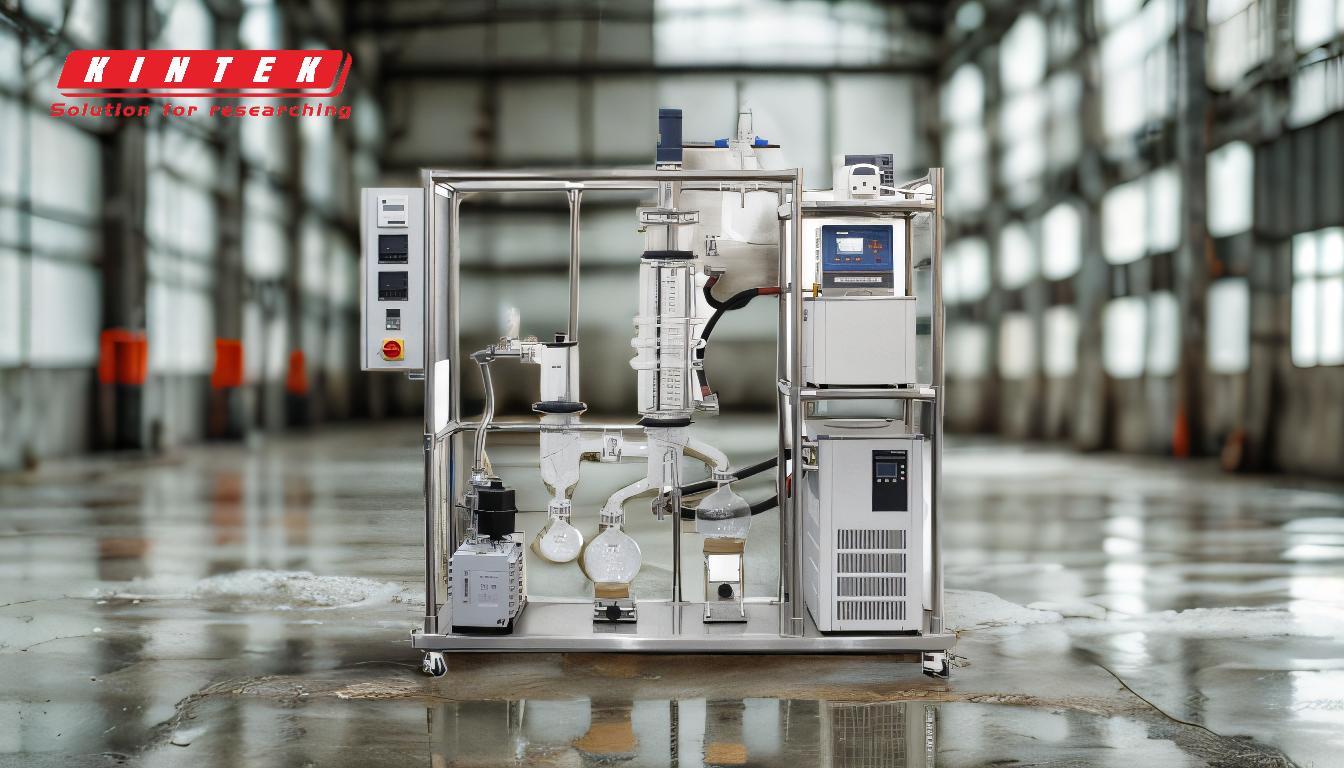Fractional distillation and simple distillation are both techniques used to separate components of a mixture based on their boiling points. However, fractional distillation is more advanced and effective for separating liquids with similar boiling points. The primary difference lies in the use of a fractionating column in fractional distillation, which introduces multiple stages of vapor-liquid contact, enhancing the separation process. This allows for the purification of compounds with boiling points as close as 25°C (77°F) apart, which simple distillation cannot achieve. Fractional distillation is widely used in industries like petroleum refining and alcohol production due to its higher efficiency, though it is more expensive and complex than simple distillation.
Key Points Explained:

-
Basic Principle of Distillation:
- Both simple and fractional distillation rely on the principle of boiling a liquid mixture to produce vapor, which is then condensed back into liquid form. The separation occurs because different components of the mixture have different boiling points.
-
Key Difference: Fractionating Column:
- The most significant difference between the two methods is the presence of a fractionating column in fractional distillation. This column is absent in simple distillation.
- The fractionating column provides multiple stages for vapor-liquid contact, allowing for more precise separation of components with similar boiling points.
-
Enhanced Separation in Fractional Distillation:
- In fractional distillation, the vapor passes through the fractionating column, where it undergoes repeated condensation and re-vaporization. This process increases the purity of the separated components.
- The column enhances the separation of liquids with boiling points as close as 25°C (77°F) apart, which is not possible with simple distillation.
-
Efficiency and Purity:
- Fractional distillation is more efficient and produces higher-purity products compared to simple distillation. This is due to the additional stages of separation provided by the fractionating column.
- Simple distillation is limited to separating components with significantly different boiling points and is less effective for complex mixtures.
-
Applications:
- Fractional Distillation: Commonly used in industries such as petroleum refining (e.g., gasoline purification) and alcohol production (e.g., ethanol purification). It is ideal for separating complex mixtures with components of similar volatility.
- Simple Distillation: Used for simpler tasks, such as purifying water or separating liquids with large differences in boiling points (e.g., water and salt).
-
Cost and Complexity:
- Fractional distillation is more expensive and complex due to the need for specialized equipment like the fractionating column. It also requires more energy and time to achieve the desired separation.
- Simple distillation is cheaper and easier to set up, making it suitable for less demanding separation tasks.
-
Example of Separation:
- Fractional Distillation: Can separate ethanol (boiling point: 78°C) from water (boiling point: 100°C) effectively, even though their boiling points are relatively close.
- Simple Distillation: Cannot effectively separate ethanol and water due to their similar boiling points. It is better suited for separating water from a non-volatile solute like salt.
-
Mechanism of the Fractionating Column:
- The fractionating column contains materials (e.g., glass beads or plates) that provide a large surface area for vapor-liquid interaction. As the vapor rises, it cools and condenses, then re-vaporizes, creating multiple distillation stages within the column.
- This mechanism allows for the collection of lower-boiling-point compounds at the top of the column and higher-boiling-point compounds at the bottom.
-
Industrial Relevance:
- Fractional distillation is indispensable in industries where high-purity separation is required, such as in the production of fuels, chemicals, and alcoholic beverages.
- Simple distillation is more suitable for small-scale or laboratory applications where high purity is not critical.
-
Limitations of Simple Distillation:
- Simple distillation is limited to separating components with boiling points that differ by a large margin (e.g., >50°C). It cannot handle mixtures with closely spaced boiling points or complex compositions.
In summary, fractional distillation is a more advanced and effective method for separating mixtures with components of similar boiling points, thanks to the inclusion of a fractionating column. While it is more expensive and complex, its ability to achieve high-purity separation makes it indispensable in many industrial applications. Simple distillation, on the other hand, is simpler and cheaper but is limited to less demanding separation tasks.
Summary Table:
| Aspect | Fractional Distillation | Simple Distillation |
|---|---|---|
| Key Feature | Uses a fractionating column for multiple stages | No fractionating column |
| Separation Efficiency | High; separates liquids with boiling points as close as 25°C apart | Low; requires large boiling point differences (>50°C) |
| Applications | Petroleum refining, alcohol production | Water purification, simple separations |
| Cost and Complexity | More expensive and complex | Cheaper and simpler |
| Purity of Output | High-purity separation | Lower purity |
Need help choosing the right distillation method for your application? Contact our experts today!










